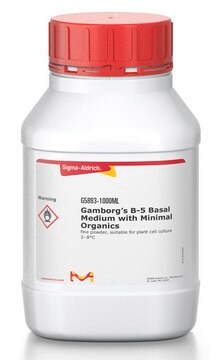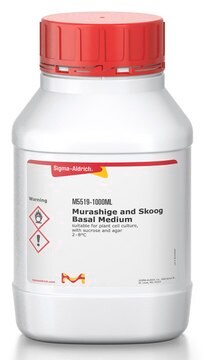M3128
Myristic acid
Sigma Grade, ≥99%
Sinónimos:
1-Tridecanecarboxylic acid, C14:0, NSC 5028, Tetradecanoic acid
About This Item
Productos recomendados
biological source
Elaeis guineensis kernels
Quality Level
grade
Sigma Grade
assay
≥99%
form
powder or flakes
bp
250 °C/100 mmHg (lit.)
mp
52-54 °C (lit.)
functional group
carboxylic acid
lipid type
saturated FAs
shipped in
ambient
storage temp.
−20°C
SMILES string
CCCCCCCCCCCCCC(O)=O
InChI
1S/C14H28O2/c1-2-3-4-5-6-7-8-9-10-11-12-13-14(15)16/h2-13H2,1H3,(H,15,16)
InChI key
TUNFSRHWOTWDNC-UHFFFAOYSA-N
¿Está buscando productos similares? Visita Guía de comparación de productos
Categorías relacionadas
Application
- Description of Ewiss cheese, a new ewe′s milk cheese processed by Swiss cheese manufacturing techniques: microbiological, physicochemical and sensory aspects.: This study details the production of Ewiss cheese, focusing on the microbiological and physicochemical properties, including the use of myristic acid in enhancing flavor and texture profiles (Garofalo et al., 2024).
- Experiments and Molecular Simulations to Study the Effect of Surface-Active Compounds in Mixtures of Model Oils on CO2 Corrosion during Intermittent Oil-Water Wetting.: Investigates how myristic acid, as a surface-active compound, influences CO2 corrosion mechanisms in oil-water systems, offering insights into corrosion prevention strategies in the oil industry (Norooziasl et al., 2024).
Biochem/physiol Actions
Storage Class
11 - Combustible Solids
wgk_germany
nwg
flash_point_f
Not applicable
flash_point_c
Not applicable
ppe
dust mask type N95 (US), Eyeshields, Gloves
Elija entre una de las versiones más recientes:
¿Ya tiene este producto?
Encuentre la documentación para los productos que ha comprado recientemente en la Biblioteca de documentos.
Los clientes también vieron
Artículos
Lipid Induced Insulin Resistance
Nuestro equipo de científicos tiene experiencia en todas las áreas de investigación: Ciencias de la vida, Ciencia de los materiales, Síntesis química, Cromatografía, Analítica y muchas otras.
Póngase en contacto con el Servicio técnico







